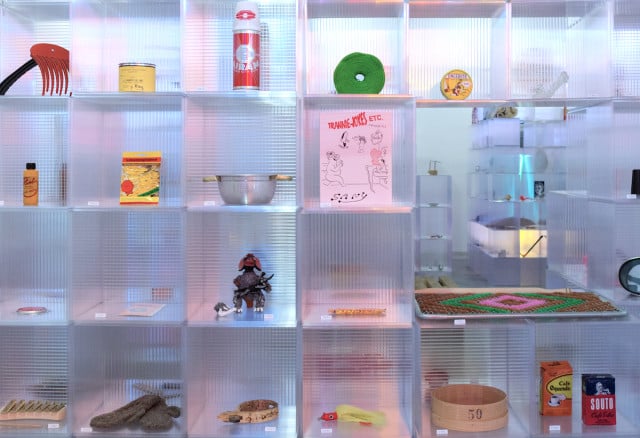Art & Exhibitions
In Greater New York at PS1, Kiosk’s Art Is Shopping
THE DAILY PIC: Functional goods offered for sale get at art's unfunctional ones.

THE DAILY PIC: Functional goods offered for sale get at art's unfunctional ones.

Blake Gopnik


THE DAILY PIC (#1461, back from holidays): I’ve now had three visits to the “Greater New York” show at MoMA’s PS1 art center in New York, clocking up something like ten hours there. Each visit has left me more impressed than the last. I don’t believe that giant survey shows can ever be more than grab bags of stuff – no one moment’s art ever coheres beyond that – but this grab bag is better filled than most, with a sensibility that strays well beyond the art marketplace. That’s why I’ll be giving it this whole week of Pics.
My first image from “Greater New York” could almost stand for the entire exhibition: It’s a small detail from PS1’s display of the peculiar objects put on show, and up for sale, by the retailer-slash-art-collective named Kiosk. The collective’s artist-owners scour the world for fascinating household items and utensils, then offer them to their connoisseur-customers. The straight-ahead pleasure to be had from Kiosk’s oddities – wooden strap-on skates still being made in Holland; hand-bent aluminum hangers from a market in India – is an obvious avatar for the pleasure to be had from art. Kiosk’s project is a riff on the readymade, of course, but its organizers act as though Duchamp’s urinal-as-art could be repurposed, and reappreciated, as a tool for peeing.
Speaking of tools: The philosopher Alva Noë has recently published an excellent book on the nature of art objects that bills them as “strange tools” (which is also the book’s title) – for Noë, artworks are tools used to help us consider the very nature of what it is to be human, which, among other things, is to be a user of tools that are mostly unstrange. Kiosk presents this larger set of cool, usable things of which fine art is just one possible subset.
Kiosk doesn’t pretend that commerce can ever be completely taken out of our tool exchanges, but it seems to strive for capitalism with a human face. It’s the best the art world can hope for. (Photo by Pablo Enriquez for MoMA PS1)
For a full survey of past Daily Pics visit blakegopnik.com/archive.